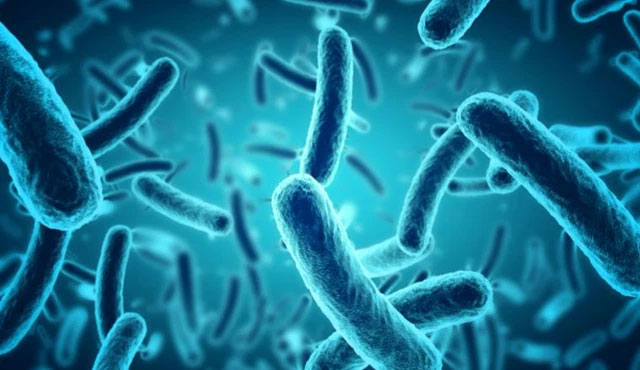Finding the 'key' for humans to breathe on Mars
One of the biggest obstacles that NASA or any other organization is facing in its mission to send humans to Mars is providing necessary supplies such as water, oxygen and food. The current goal is to find a way to produce these items on the Red Planet itself, because that will help reduce the volume of goods that we need to transport from Earth to Mars. And thanks to bacteria, scientists may have found a solution to at least one of those problems, with a new way to generate oxygen on Mars.
Bacteria could help us make oxygen on Mars

Cyanobacteria can produce oxygen on Mars.
NASA is working on technology that could allow us to breathe on Mars. But now, scientists want to take it a step further by creating oxygen on the planet itself.
The scientists first published their findings in February 2021. In a press release, the scientists emphasized the importance of sourcing key consumables from the government. Mars. And when we set foot on the surface of this planet, finding supplies of those things from Earth will be very expensive, especially in the long run.
With cyanobacteria, however, scientists believe they can produce oxygen on Mars, allowing us to breathe freely on the Red Planet.
'Cyan bacteria have long been targeted as candidates to support biological life in space missions, as all species produce oxygen through photosynthesis while some may try to convert atmospheric nitrogen into nutrients,' the press release reads.
But what makes this bacterium so special? Essentially, all cyanobacteria use photosynthesis to produce oxygen from carbon dioxide. In addition, bacteria has been shown to be resilient, as it survives in some of the most extreme environments on our planet. Because of those two factors, many believe they could be the key to man-making oxygen on Mars.
Make Mars a suitable environment for bacteria

Oxygen-producing cyanobacteria can be cultured on Mars at low pressure.
Before we can use cyanobacteria to make oxygen on Mars, however, we must find a way to make it grow there. While many believe it can survive extreme environments, Mars' atmosphere has less than 1% total pressure than Earth's. Therefore, bacteria cannot grow directly in the atmosphere here. At the same time, creating an Earth-like atmosphere on Mars would be too costly.
That's why a team of scientists, including astrophysicist Cyprien Verseux, created a bioreactor called Atmos. This is an acronym for Atmosphere Tester for Mars-bound Organic Systems or "Atmosphere Tester for Mars-bound Organic Systems". Atmos allows scientists to test and create atmospheric conditions similar to those on Mars. The purpose of this is to find out what atmospheric conditions allow cyanobacteria to grow most readily.
They can then use this information to make small changes in the Martian atmosphere. This will allow cyanobacteria to grow in those conditions. The ultimate goal is to allow them to generate oxygen on Mars. And they found that a particular type of cyanobacteria, Anabaena, grew under all of the conditions of the test. As such, the researchers demonstrated that oxygen-producing cyanobacteria can be cultured on Mars at low pressure under controlled conditions.
Furthermore, the fact that they were able to demonstrate that it could be grown with Mars-specific "local ingredients". That means we won't need to "import" gas or any other material onto the planet to make oxygen. Of course, there's still a lot of work to be done before we can use these cyanobacteria to generate oxygen on Mars.
This also may not be an immediate solution to making Mars habitable. But, scientists at least had a foundation to build on.
- Video: How will astronauts on Mars breathe?
- Here's how humans live on Mars: Growing vegetables in a cellar and ... chewing on live insects
- 'That' on Mars will be dangerous, but it can create new subspecies of humans
- How long do people live when wearing jeans on T-shirts on Mars
- Mars on Mars is very harmful to humans
- NASA explains the confusing
- Intense snowstorms appear at night on Mars
- What will people on Mars look like?
- 5 ways to warm Mars without a nuclear bomb
- Humans can survive on Mars
- If you don't bring people to Mars, humans will soon become extinct
- Details of how humans will live in Mars, expected in 20 years
 Announced 3 houses on the Moon and Mars
Announced 3 houses on the Moon and Mars Science proves: Mars also knows 'deflated'
Science proves: Mars also knows 'deflated' Elon Musk announced the price for a Mars trip was 11.6 billion VND, free of charge
Elon Musk announced the price for a Mars trip was 11.6 billion VND, free of charge NASA discovered strange 'gate' on Mars, is the hiding place found?
NASA discovered strange 'gate' on Mars, is the hiding place found?